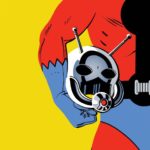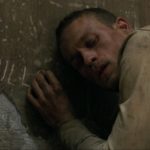
 Marvel commemorates the 60th anniversary of Earth’s Tiniest Avenger with Ant-Man #1, the first chapter of a time-hopping, astonishing new series.
Marvel commemorates the 60th anniversary of Earth’s Tiniest Avenger with Ant-Man #1, the first chapter of a time-hopping, astonishing new series.
When Hank Pym debuted in 1962’s Tales to Astonish #35, there was no telling just how much the Ant-Man name would permeate pop culture. Paul Rudd’s take on the second Ant-Man, Scott Lang, has especially become a fan favorite among fans in the Marvel Cinematic Universe. But Ant-Man #1 isn’t just about Lang; it’s a decades-spanning celebration of all the characters who’ve either worn the helmet or will in the future. Al Ewing penning a high-concept story with beloved superheroes? Who could have foreseen this?!
Ant-Man #1 drops us right in the middle of things —or rather, the future of them— with an unnamed scientist traveling to the past whose sole objective is encountering an early Hank Pym for reasons yet unknown to the reader. (A disembodied narrator assures us that this information will become clear later.) After a classic romp with the Wasp, Janet van Dyne, Pym is brought back to the future to learn the mysterious man also calls himself Ant-Man. But who is he really, and why is he doing this?
Time travel is a classic trope in superhero fiction; some would even call it a lazy crutch nowadays. So with this series employing it as its main plot thrust, it all comes down to the approach and the level of care put into various details that make it worth the price of admission. But anyone even halfway familiar with Al Ewing’s writing knows better than to doubt him or his creative instincts. That’s why Ant-Man #1 succeeds as much as it does, boasting a strong authorial voice in Ewing with a stellar art team of Tom Reilly and Jordie Bellaire beside him.
Reilly, recently of last year’s nostalgic The Thing, really suits this series with his faux-retro style that’s just as timeless as it is modern. Old comics didn’t look quite like this one does, of course, but it definitely evokes the Silver Age’s bygone sensibilities, bolstered by the use of a sepia overlay for the parts of the issue set in the past. Jordie Bellaire’s flat, textured colors (a staple of her work) bring it all home, really selling the fantasy being sold to the reader here when it counts. But it doesn’t stop there — we even have page numbers bubbled into the corners of panels in those scenes, and Ewing uses thought bubbles over narration boxes to show what characters are thinking during them. It’s just a top-to-bottom perfect melding of concept and execution from every area. But the rest of the book also looks great, contrasting the retro style of the ’60s-set portions with sleek minimalism in the future/present. I wonder if this style shifting will continue as we follow the story into other decades, but I have to imagine it will.


![[LIST] PORTAL FANTASY FAVORITES TO TAKE YOU INTO A NEW WORLD](https://geekd-out.com/wp-content/uploads/2021/03/PortalFantasyHeader-150x150.png)
![[NEWS] ‘WATCHMEN’ TRAILER BREAKDOWN](https://geekd-out.com/wp-content/uploads/2019/07/Cops-2-150x150.png)
